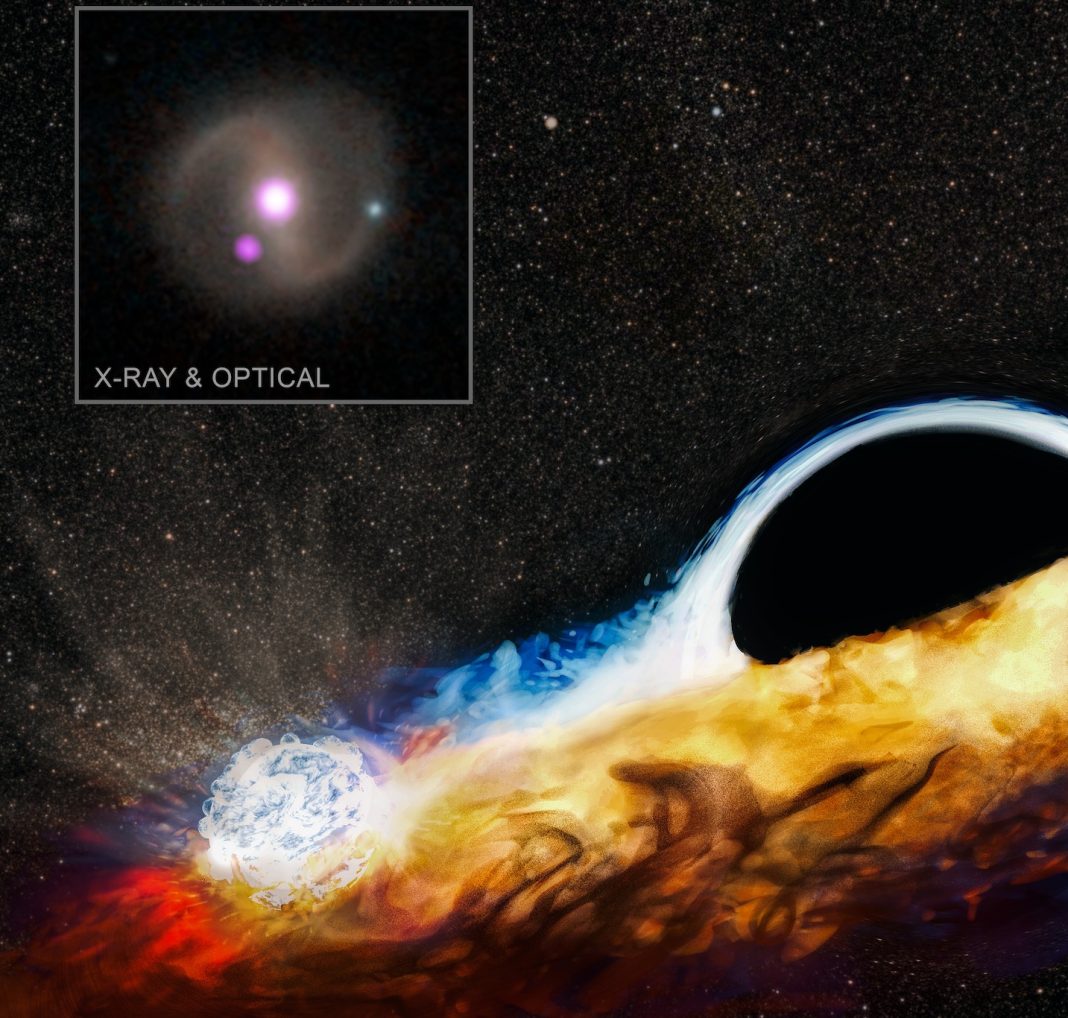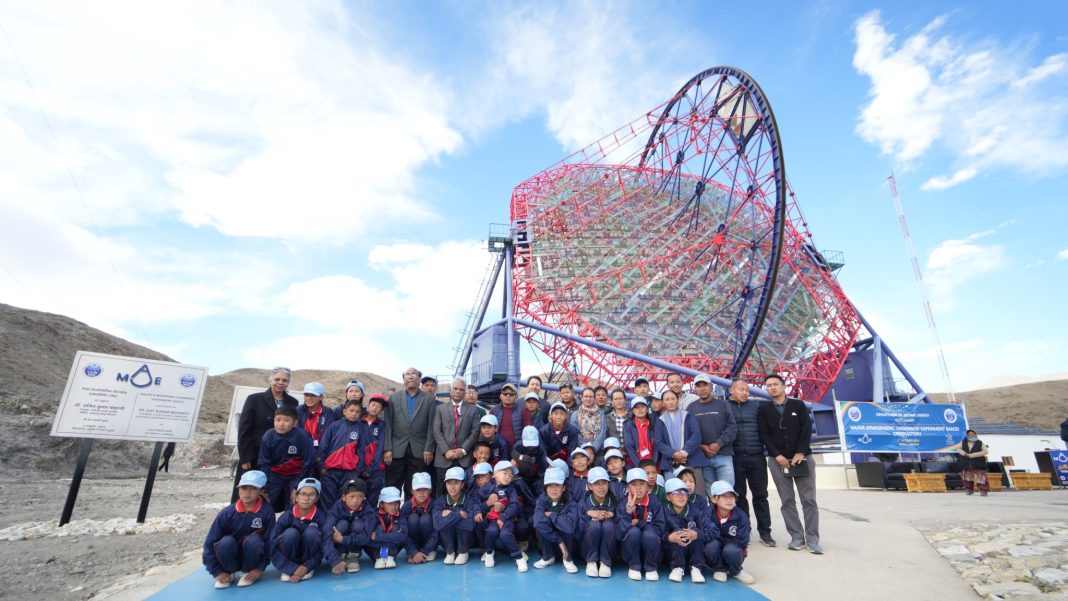Bengaluru, Oct 11: India’s AstroSat and NASA’s space observatories have captured dramatic eruptions from stellar wreckage around a massive black hole, the ISRO said on Thursday.
A massive black hole has torn apart one star and is now using that stellar wreckage to pummel another star or smaller black hole that used to be in the clear — this discovery was made using NASA’s space observatories — Chandra, HST, NICER, Swift — and ISRO’s AstroSat, the Indian space agency said.
“It provides astronomers with valuable insights, linking two mysteries where there had previously only been hints of a connection”, Bengaluru-headquartered ISRO (Indian Space Research Organisation) said in a statement.
In 2019, it was noted, astronomers witnessed the signal of a star that got too close to a black hole and was destroyed by the black hole’s gravitational forces. Once shredded, the star’s remains began circling the black hole in a disk in a type of stellar graveyard.
Over a few years, however, this disk has expanded outward and is now directly in the path of a star, or possibly a stellar-mass black hole, orbiting the massive black hole at a previously safe distance, according to ISRO.
The orbiting star is now repeatedly crashing through the debris disk, about once every 48 hours, as it circles. When it does, the collision causes bursts of X-rays that astronomers captured with Chandra, it stated.
“Imagine a diver repeatedly going into a pool and creating a splash every time she enters the water,” Matt Nicholl of Queen’s University Belfast, the United Kingdom, the lead author of the study that appears in the current issue of ‘Nature’ was quoted as saying in the ISRO statement.
“The star in this comparison is like the diver and the disk is the pool, and each time the star strikes the surface it creates a huge ‘splash’ of gas and X-rays. As the star orbits around the black hole, it does this over and over again,” he said.
According to ISRO, scientists have documented many cases where an object gets too close to a black hole and gets torn apart in a single burst of light. Astronomers call these “tidal disruption events” (TDEs).
In recent years, astronomers have also discovered a new class of bright flashes from the centers of galaxies, which are detected only in X-rays and repeat many times. These events are also connected to supermassive black holes, but astronomers could not explain what caused the semi-regular bursts of X-rays. They dubbed these “quasi-periodic eruptions,” or QPEs, it was stated..
“There had been feverish speculation that these phenomena were connected, and now we’ve discovered the proof that they are,” said co-author Dheeraj Pasham of the
Massachusetts Institute of Technology. “It’s like getting a cosmic two-for-one in terms of solving mysteries.”
This tidal disruption event, now known as AT2019qiz, was first discovered by a wide-field optical telescope at the Palomar Observatory, called the Zwicky Transient Facility, in 2019. In 2023, astronomers used both Chandra and NASA’s Hubble Space Telescope to study the debris left behind after the tidal disruption had ended.
The Chandra data were obtained during three different observations, each separated by about four to five hours. The total exposure of about 14 hours of Chandra time revealed only a weak signal in the first and last chunk, but a very strong signal in the middle observation, it stated.
“From there Nicholl and collaborators used NASA’s Neutron Star Interior Composition Explorer (NICER) to look frequently at AT2019qiz for repeated X-ray bursts. The NICER data showed that AT2019qiz erupts roughly every 48 hours. Observations from NASA”s Neil Gehrels Swift Observatory and India’s AstroSat telescope cemented the finding,” ISRO stated.
The ultraviolet data from Hubble, obtained at the same time as the Chandra observa-tions, allowed the scientists to determine the size of the disk around the supermassive black hole. They found that the disk had become large enough that if any object was orbiting the black hole within a period of about a week or less, it would collide with the disk and cause eruptions.
Gulab Dewangan, a co-author from the Pune-based Inter-University Center for Astronomy and Astrophysics (IUCAA), noted that India’s AstroSat mission provides unique UV/X-ray capability for studying such events. AstroSat’s Soft X-ray Telescope and the Ultra-Violet Imaging Telescope (UVIT) both detected the source AT2019qiz, but the eruptions were only seen in X-rays. (PTI)




